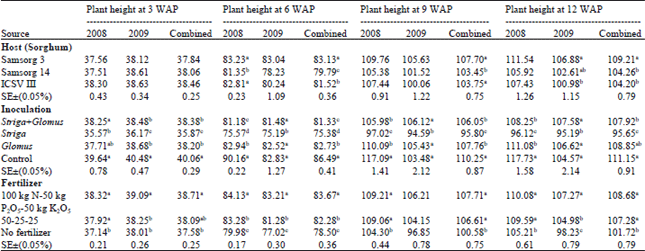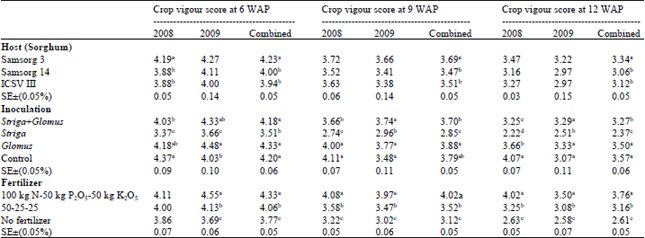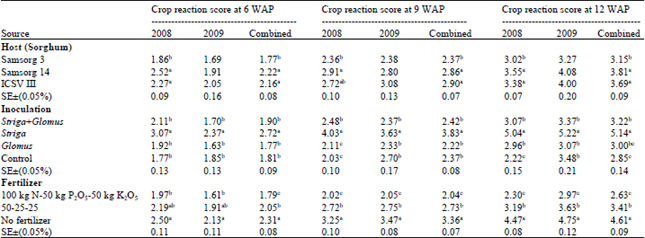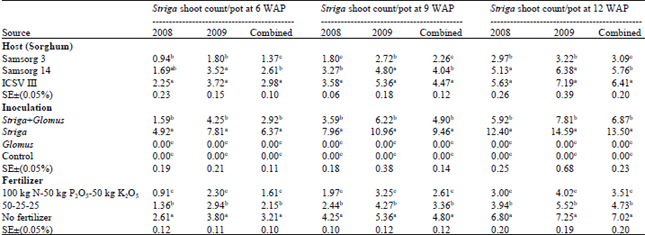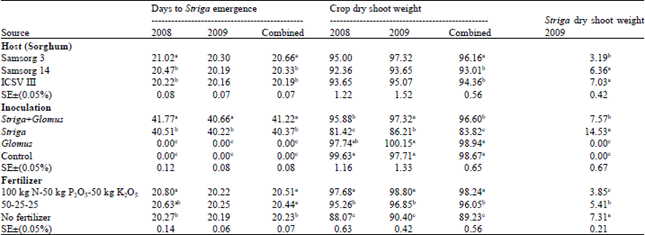Research Article
Management of Striga hermonthica on Sorghum (Sorghum bicolor) Using Arbuscular Mycorrhizal Fungi (Glomus mosae) and NPK Fertilizer Levels
Department of Crop Production, Faculty of Agriculture, Ibrahim Badamasi Babangida University, Lapai, Niger State, Nigeria
Niranjan Kumar
Department of Crop Production, Faculty of Agriculture, Ibrahim Badamasi Babangida University, Lapai, Niger State, Nigeria
S.T. O. Lagoke
Department of Plant Physiology and Crop Production, Federal University of Agriculture, Abeokuta, Ogun State, Nigeria
M.O. Atayese
Department of Plant Physiology and Crop Production, Federal University of Agriculture, Abeokuta, Ogun State, Nigeria









